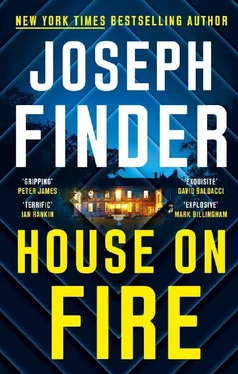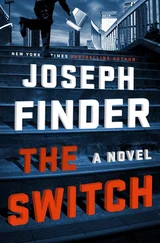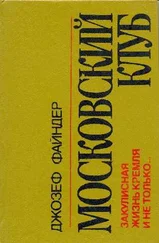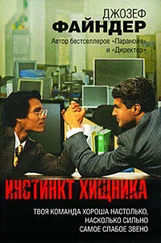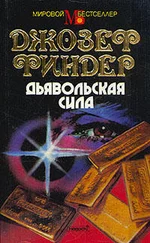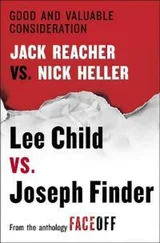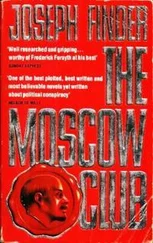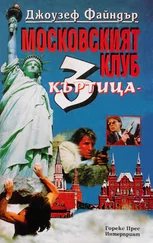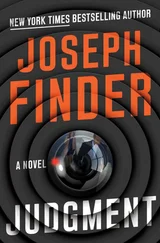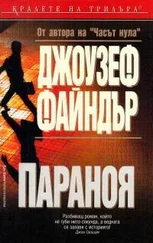The proper way to do this is to use an ESDA machine, an electrostatic detection apparatus, to lift indented writing off paper. It’s nondestructive. But I didn’t have that with me and I didn’t have the time. And for my purposes, I didn’t need it. The old-fashioned way worked just fine.
It brought up a constellation of notes in Maggie’s bold handwriting:
MEGAN KIMBALL
KIMBALL PHARM CONRAD K.
HK—>$$$?
LAST WILL & TEST. REVISED???
COMMINGLING OF FUNDS???
That last — commingling of funds — was underlined three times. Then there was a name, CONRAD BLACK, with a circle around it.
MEGAN KIMBALL — that was who had called her first, to hire her. And it was clear the call was all about Conrad, Megan’s father. Megan was asking about her father’s will, had it been revised? And something about HK and money. HK being Hong Kong?... Or Hayden Kimball?
Conrad Black: now, there was an interesting name. I didn’t know the man, but my father did. A bright, scholarly guy. He’s a Canadian financier, used to be called a “press baron,” who was convicted on four counts of fraud. He used to own the Jerusalem Post and the Daily Telegraph but got in trouble and went to prison for embezzlement and such. What that really meant was putting his personal expenses — household staff, private chefs, private jets, chauffeurs — on the company tab. Even though it was a publicly traded company. Was another Conrad — Conrad Kimball — doing the same thing? And why was Maggie taking notes about it?
I grabbed the marked-up piece of paper and tore it off the pad. Folded it three times, like Maggie used to do.
I felt like I had something useful now. I looked around the rest of the apartment, her bedroom, and I felt a pang. More than a pang: it was outright painful to look around and see the neatly arranged detritus of her life. A poster of Santorini — she must have traveled to Greece after she left the service. A collection of snow globes from all the places she’d lived, which was a lot. Her drawer of panties.
But I knew Maggie was too careful to leave any unencrypted disks or hard drives lying around. There was nothing more here to find. I also, to be honest, wanted to leave. I couldn’t bear to be there any longer.
Sukie Kimball was surprised to hear from me. I was vague, said that I had to talk to her, that it was “family business,” and she gave me directions to her town house on Sullivan Street, in the Village.
I made a quick call and confirmed my plans: I was going to spend the night at a friend’s pied-à-terre in the city. The friend was out of town, as usual. He was a trader in diamonds and precious stones, and he spent maybe twenty days a year in Manhattan. His apartment sat empty. I dropped off my car in one of those rip-off parking garages near Central Park South and took the subway.
It was early evening when I got there. Sukie’s town house, between Houston and Bleecker, was a graceful four-story building — red brick with tall, original windows, black-painted lintels above them like eyebrows. Her studio and office was on the ground floor, the garden level, and it had a separate entrance. I rang the bell, and a young woman answered the door. Black-haired, early twenties, chunky tortoiseshell glasses. She seemed to be expecting me.
“Hey,” she said, out of breath, “Sukie’s in the editing room. Let me show you in.”
I entered an empty sort of bullpen, a collection of desks set up in cubicles, which led to a narrow hallway. The young woman said, “Did you get hassled by any protesters out there?”
I told her I hadn’t seen any.
“Oh, yeah, they’ve been here a lot in the last couple of weeks. Someone figured out she’s a Kimball, even though she’s known as Susan Garber? And they got this address — I don’t know how, but they did. I mean, she doesn’t even work for the company or anything, right? She makes her documentaries, she stays out of the whole opioid thing, and she goes to all these funerals. I mean, she’s one of the good guys!”
I told her I agreed.
She led me into the first room we came to, where Sukie was sitting at a desk with two very large monitors and a couple of expensive-looking speakers. The room was windowless and unadorned. A couch, a couple of chairs. One wall had a large corkboard covered with index cards. A rumpled middle-aged man was seated next to her. Sukie caught my eye and smiled. She was in the middle of a conversation with the rumpled guy. “Did you try Q?” she said to him.
“Yeah, it didn’t work.”
“Did you try moving Harold’s fight up before the archival?”
“I did. I liked that.”
“You think it works? Great. Okay, let me take a break, just a couple of minutes.”
Sukie was wearing jeans and a black T-shirt and large gold hoop earrings. Her dark brown hair was up, tied back with a scrunchie. “Sorry,” she said, “I’ve got my editor here and it’s a little hectic. What’s going on?”
“Couple minutes,” I said. I didn’t want to talk in front of the others.
“Let’s go to my office.”
Her office was the last room we came to, amber with low slanted light from the setting sun in a couple of large windows and French doors that opened onto a small, wild-looking yard. The yard connected to an expanse of lawn, a large communal garden shaded by old elms and sycamores and maples.
I pointed outside. “Open space in the middle of the city. I like it. Your neighbors okay?”
“They keep to themselves, mostly. Bob Dylan used to live on the garden. Anna Wintour still does.”
My face was blank.
“Editor of Vogue, ” she helpfully explained. She sat behind a small, pretty antique desk made of fruitwood. I looked around, noticed a couple of paintings on the wall, good but no one famous, and a few statuettes tucked away on a bookshelf. No posters of her own documentaries. “Where are all the movie posters?” I said.
“You mean like in Hollywood? Tacky. Not my speed.”
“But you’re good.” I’d read rave reviews of her documentary about white-collar criminals and another one about a strike at a chicken processing plant. She’d won awards.
“I’m not Barbara Kopple.”
“Who’s that?”
“Just one of the greatest documentary filmmakers of all time.”
“Sorry. I’m ignorant. Why are so many documentary makers women, anyway? I don’t get it.”
“You want to know why? Because back in the seventies, there was this idea out there that women couldn’t do fiction films — i.e., movies — but they could do documentaries. They could occupy themselves with this tiny, cheap thing.”
“That’s what documentaries are?”
“Compared to Hollywood movies. So what’s going on?”
“Why did your sister Megan hire Maggie?”
“Maggie was Hildy, right?”
I nodded.
Outside, I could hear a male voice, tinnily amplified on a loudspeaker, shouting, “ The Kimballs are killers! The Kimballs are killers! ” and chants of something I couldn’t quite make out. It sounded like “Blood money.”
She looked stricken. “Shit, they’re back.”
The echoey amplified voice said, “ Say it loud, say it clear. Kimballs are not welcome here! ”
“This happen a lot?”
“Someone discovered this is where I live, a few months back, and since then there’s been a protest weekly or more.”
“They don’t know you’re the one member of the family who’s doing something about it.”
She nodded sadly and attempted a joke: “Maybe they don’t like my docs.”
We talked over the shouting, the amplified chanting, which had grown louder, closer. I repeated my question. “Why did your sister hire Maggie Benson?”
Читать дальше
